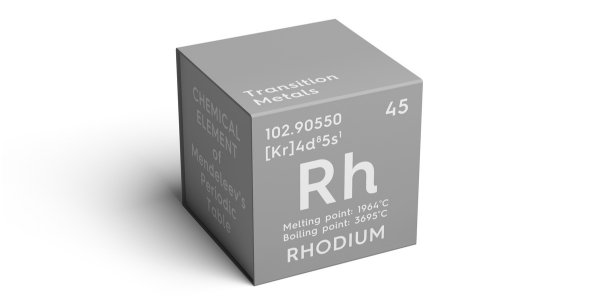Introduction to Rhodium
Rhodium is a rare, silvery-white metallic element that belongs to the platinum group metals (PGMs). It is one of the rarest and most valuable precious metals in the world, with a wide range of applications in various industries. In this article, we will explore the properties, uses, and investment opportunities of rhodium, answering questions such as “how to invest in rhodium,” “should I invest in rhodium,” and “what is the best way to invest in rhodium.”
Properties and Uses of Rhodium
Rhodium possesses unique physical and chemical properties that make it highly valuable in industrial applications. Some of its key properties include:
- High melting point (1,964°C or 3,567°F)
- Excellent corrosion resistance
- High reflectivity
- Low electrical resistance
These properties make rhodium an essential component in various industries, such as:
Automotive Industry
Rhodium is a crucial component in catalytic converters, which help reduce harmful emissions from vehicle exhaust systems. As environmental regulations become more stringent, the demand for rhodium in the automotive industry continues to grow.
Chemical Industry
Rhodium is used as a catalyst in various chemical processes, including the production of acetic acid, nitric acid, and hydrogenation reactions.
Electronics Industry
Rhodium is used in electrical contacts and as a thin-film coating in the production of high-performance mirrors and reflectors.
Jewelry Industry
Although less common than other precious metals like gold and platinum, rhodium is sometimes used as a plating material for white gold jewelry to enhance its appearance and durability.
Investing in Rhodium
Given its rarity and growing demand, rhodium has become an attractive investment opportunity for those looking to diversify their portfolios. If you’re wondering “how do you invest in rhodium” or “can you invest in rhodium,” the answer is yes, and there are several ways to do so.
Physical Rhodium
One of the most direct ways to invest in rhodium is by purchasing physical metal in the form of bars or coins. However, due to its rarity and high value, physical rhodium can be difficult to acquire and store securely.
Rhodium ETFs
Exchange-traded funds (ETFs) that track the price of rhodium provide a more accessible way for investors to gain exposure to the metal. These ETFs typically hold physical rhodium or invest in rhodium futures contracts.
Rhodium Futures
Investors can also trade rhodium futures contracts on various commodity exchanges. Futures trading allows for leverage and short selling, but it also carries a higher level of risk compared to other investment methods.
Mining Companies
Investing in companies that mine or process rhodium and other PGMs can provide indirect exposure to the metal. However, it is essential to thoroughly research these companies and consider factors such as their financial health, management, and growth prospects.
Factors Affecting Rhodium Prices
Like other precious metals, rhodium prices are influenced by various factors, including:
- Supply and demand dynamics
- Global economic conditions
- Technological advancements
- Environmental regulations
- Geopolitical events
Understanding these factors can help investors make informed decisions when considering investing in rhodium.
Risks and Considerations
While investing in rhodium can be lucrative, it is essential to be aware of the associated risks and considerations, such as:
- Price volatility: Rhodium prices can be highly volatile due to its limited supply and concentrated demand.
- Liquidity: The rhodium market is relatively small and less liquid compared to other precious metals, which can make it difficult to buy or sell quickly at desired prices.
- Storage and insurance: Storing and insuring physical rhodium can be costly and challenging due to its high value and rarity.
Rhodium vs. Other Precious Metals
Investors often compare rhodium to other precious metals like gold, silver, platinum, and palladium. While each metal has its unique characteristics and investment merits, rhodium stands out for its scarcity and industrial applications. Some investors may wonder, “how to invest in rhodium and palladium” simultaneously, as both metals are used in catalytic converters. Diversifying across various precious metals can help mitigate risk and capture potential opportunities in different market segments.
Conclusion
In conclusion, rhodium is a rare and valuable precious metal with growing demand in various industries. For investors seeking to diversify their portfolios, rhodium can be an attractive option. When considering investing in rhodium, it is crucial to weigh the potential benefits against the risks and challenges, such as price volatility and liquidity. As with any investment, thorough research and consultation with financial professionals can help investors make informed decisions based on their individual goals and risk tolerance.
Whether you choose to invest in physical rhodium, ETFs, futures, or mining companies, understanding the factors that influence rhodium prices and the unique characteristics of the metal itself can help guide your investment strategy. As the world continues to focus on sustainability and environmental protection, the demand for rhodium in applications like catalytic converters is likely to remain strong, making it a compelling investment opportunity for those willing to navigate its complexities.
For more information on investing in rhodium, please visit: https://investinpreciousmetals.weebly.com/invest-in-rhodium.html
